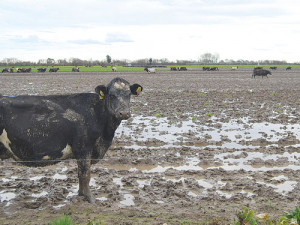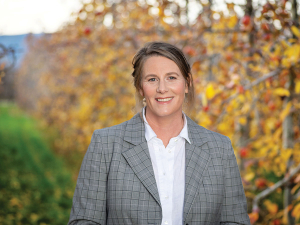I’ve spent much of the last couple of months on farms across New Zealand and I don’t think I’ve seen farms this wet before. Most farmers have done a great job reducing pasture damage on wet soils over winter by standing cows off paddocks for lengthy periods.
However, cows are now calving and pugging has become a lot more difficult to avoid. There are a few tricks farmers in traditionally wet spring areas (e.g. Northland) have learnt that farmers in other areas may need to adopt this spring:
1. Avoid pugging at all costs. Research on pugging in Northland showed one severe pugging event on wet soil can reduce pasture production by about 40% for up to 18 months after the event. If 30% of a 100ha farm growing 15tDM/ha is pugged, causing pasture growth to fall by 40% (1). on that area, the potential loss of feed amounts to about 180 tonnes of DM – and an enormous cost of $54,000 in replacement feed (at $300/t).
2. Don’t be too preoccupied with achieving target residuals until paddocks dry out. The long-term damage done to the soil by pugging often outweighs the damage done to feed quality by leaving a little feed behind.
3. Feed the cows on the feed pad after milking in the morning before they go out to the paddock (2). Cows with a belly full of feed are less likely to spend a lot of time walking around the paddock pugging the soil than hungry cows. If you don’t have a feed pad consider feeding the cows from trailers parked in the race.
4. Stand the dry cows off the paddock on the feed pad for as long as possible each day and only put them on the pasture after they have been fed on the pad. Tired cows will tend to lie down rather than walk around a paddock.
5. If paddocks are very wet, restrict the amount of time cows have access to the paddock to two four-hour periods per day (3). DairyNZ research shows there will be a slight, temporary drop in production but this is inconsequential in comparison to the potential loss in pasture production due to pugging.
6. If possible, take cows out a different gate from the one they came in through. Many paddocks have gates at either end, and cows walking back over long pasture will do less damage than cows walking over short, recently grazed pasture.
If your farm tends to be wet, seriously consider building a feed pad/standoff facility. I don’t know of any farmers who have built feed pads and regretted the decision; however, I know many farmers who sleep easy on rainy nights knowing their cows aren’t ruining their paddocks.
1 https://www.dairynz.co.nz/feed/seasonal-management/managing-pugging-damage
2 Dairy NZ Farm Fact 1-42 Wet weather strategies to minimise pasture and soil damage
3 Dairy NZ Farm Fact 1-9a. Standing cows off – how cows change grazing behaviour
















